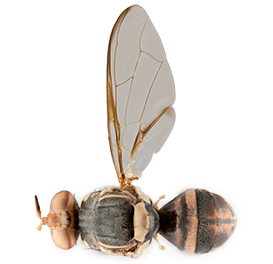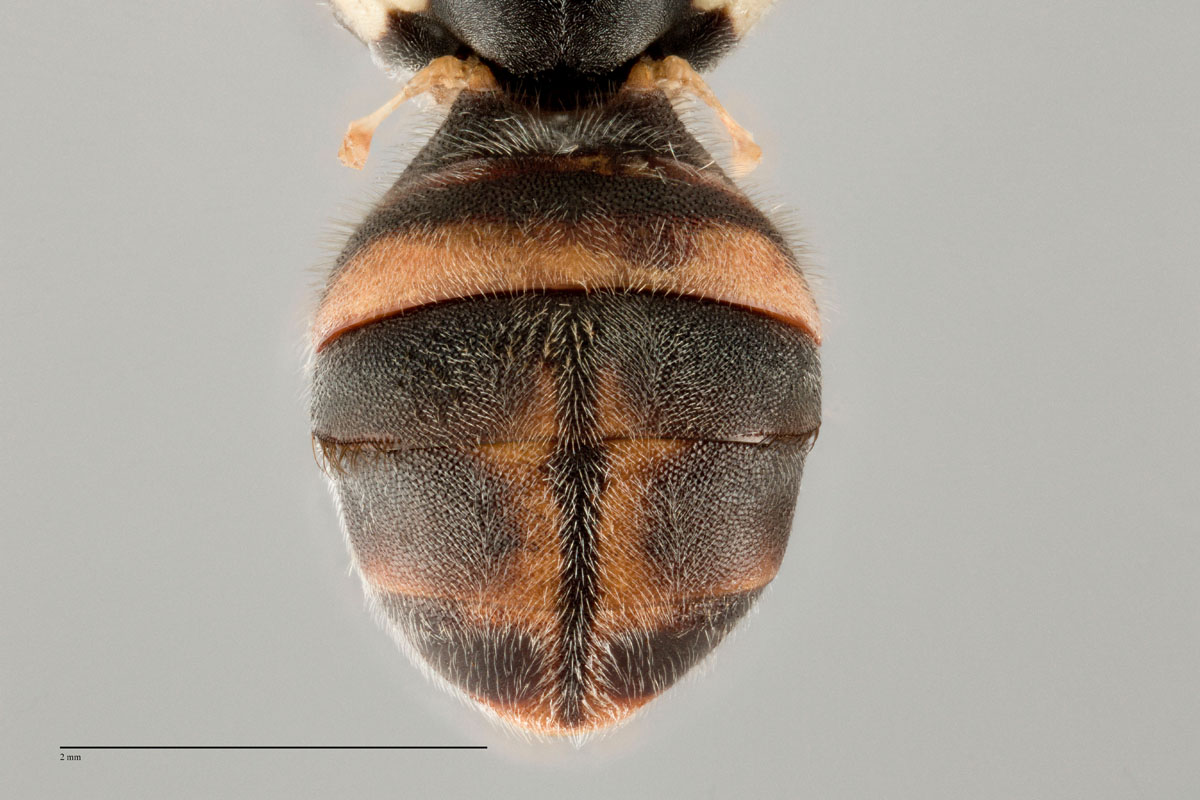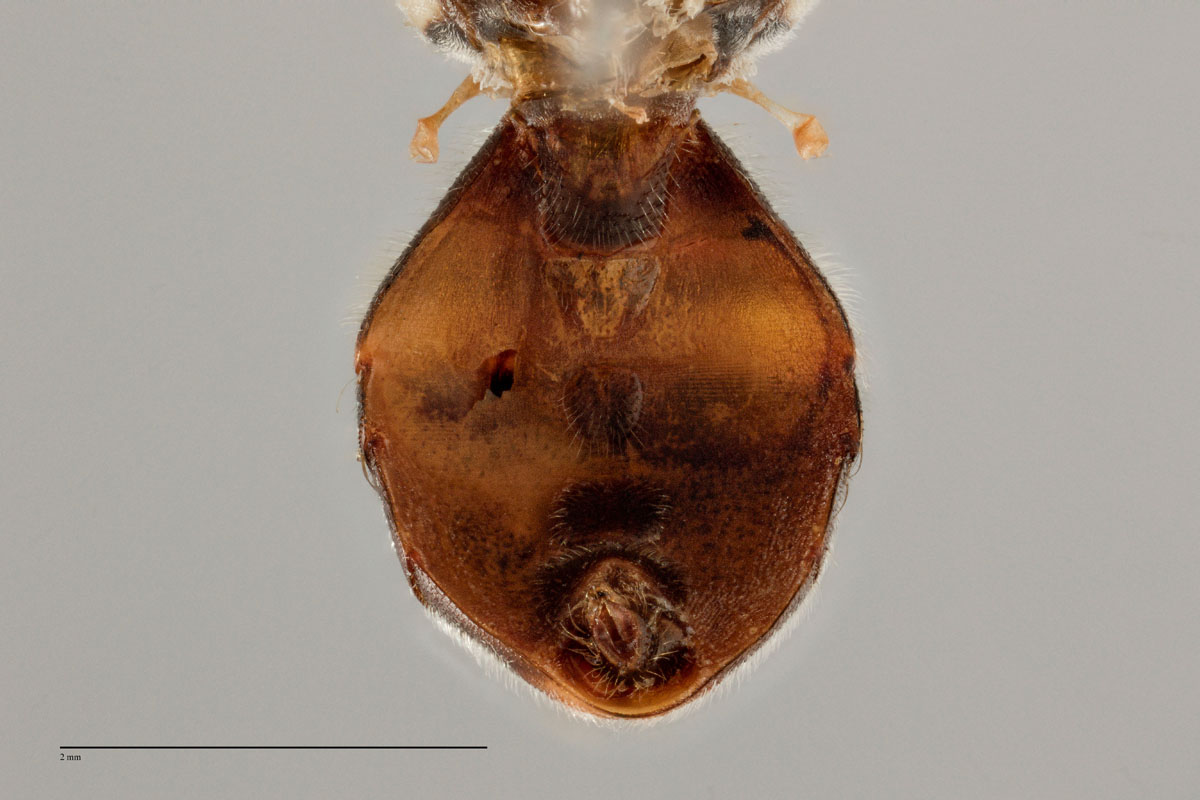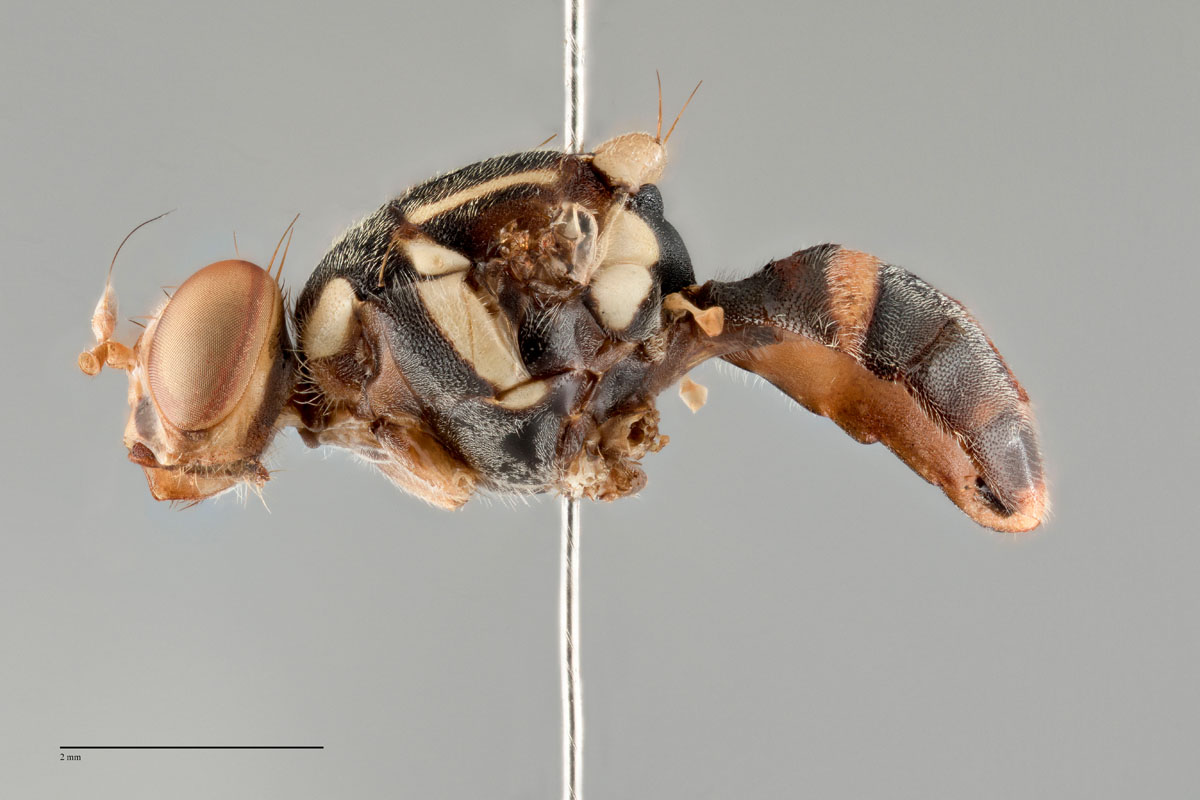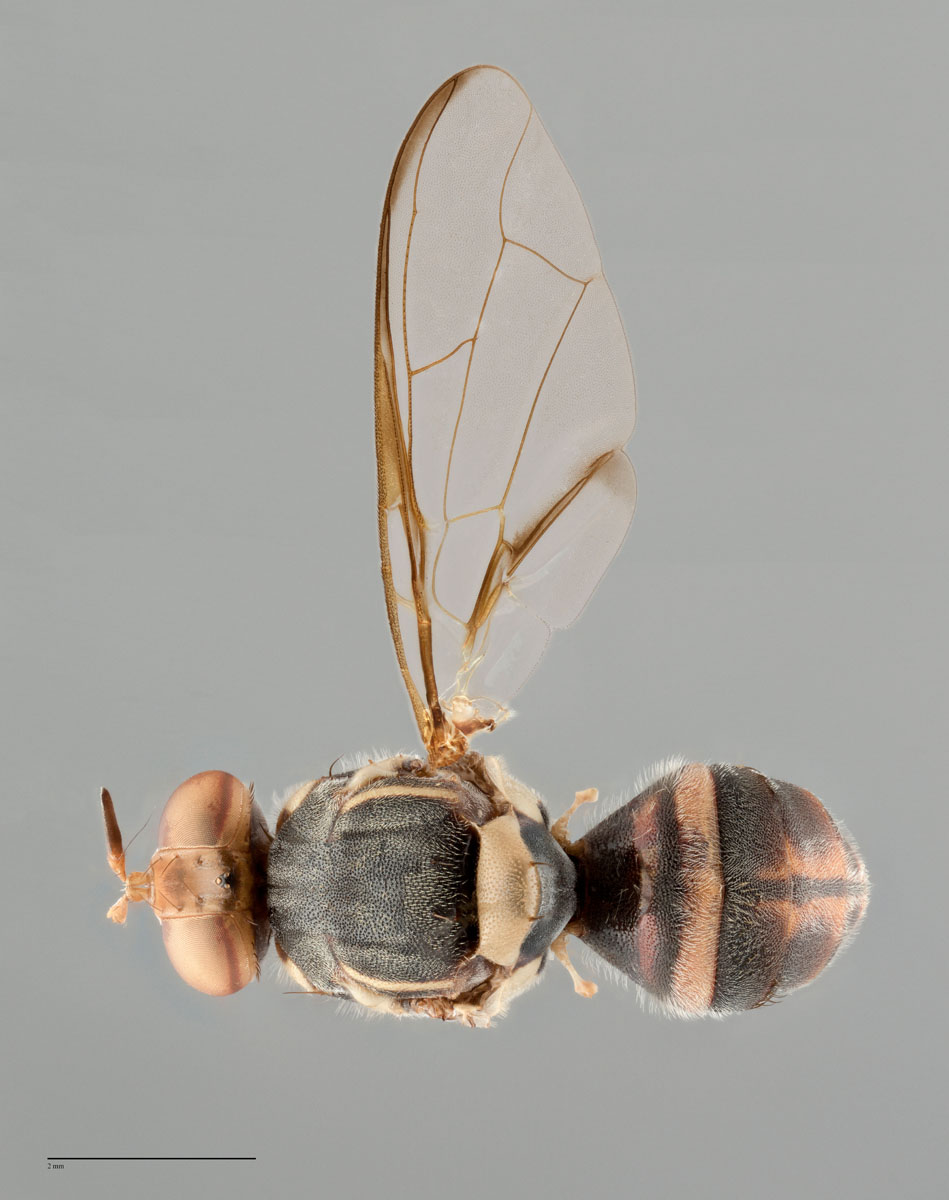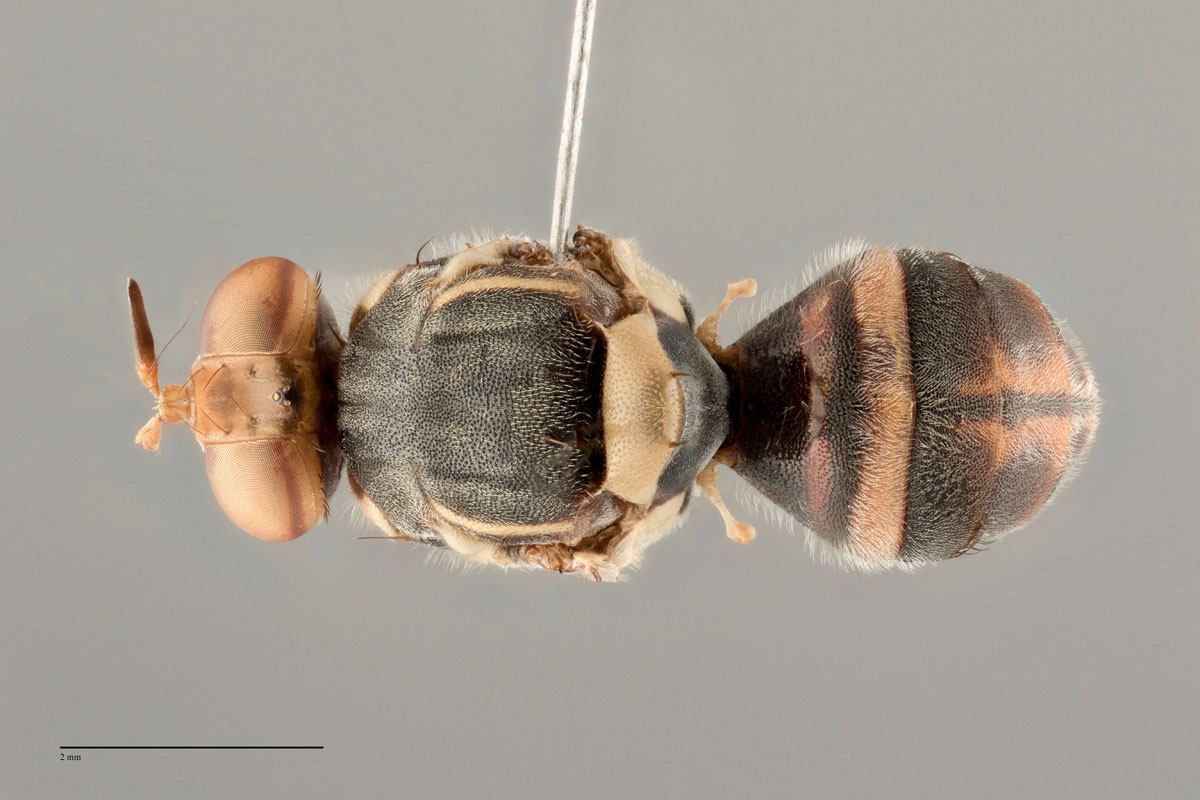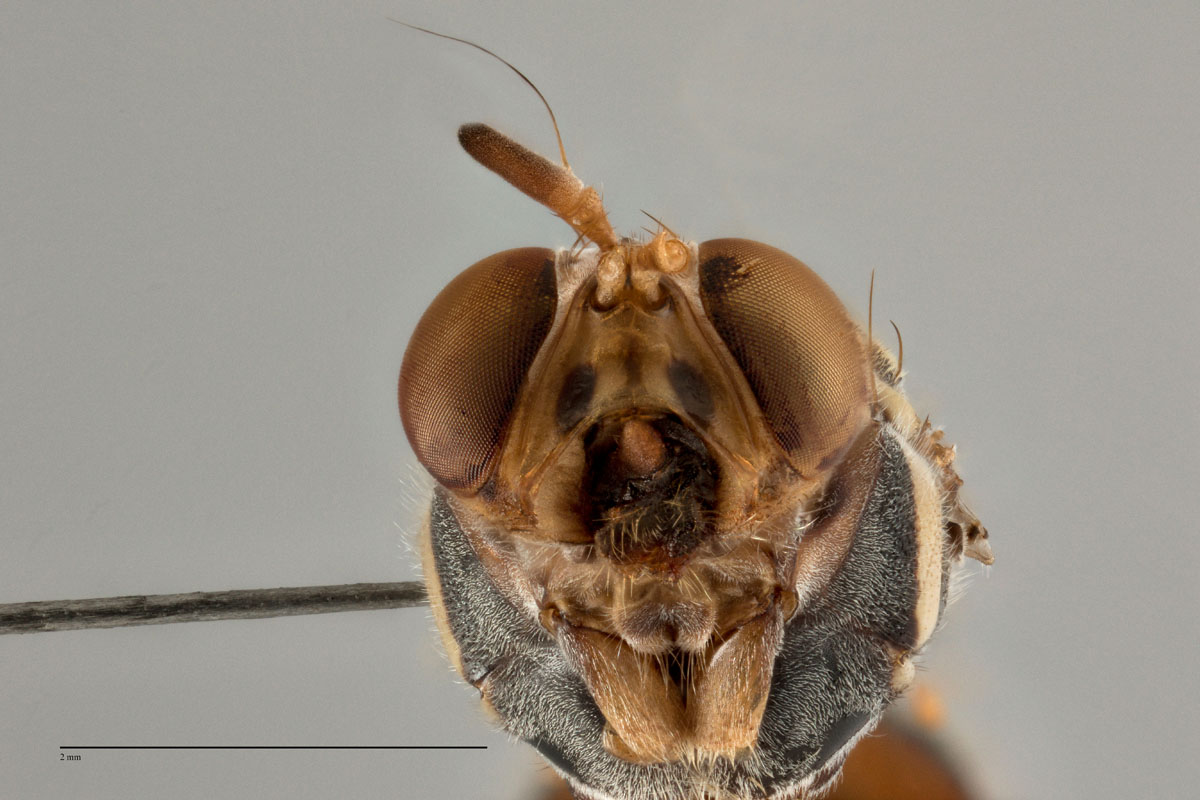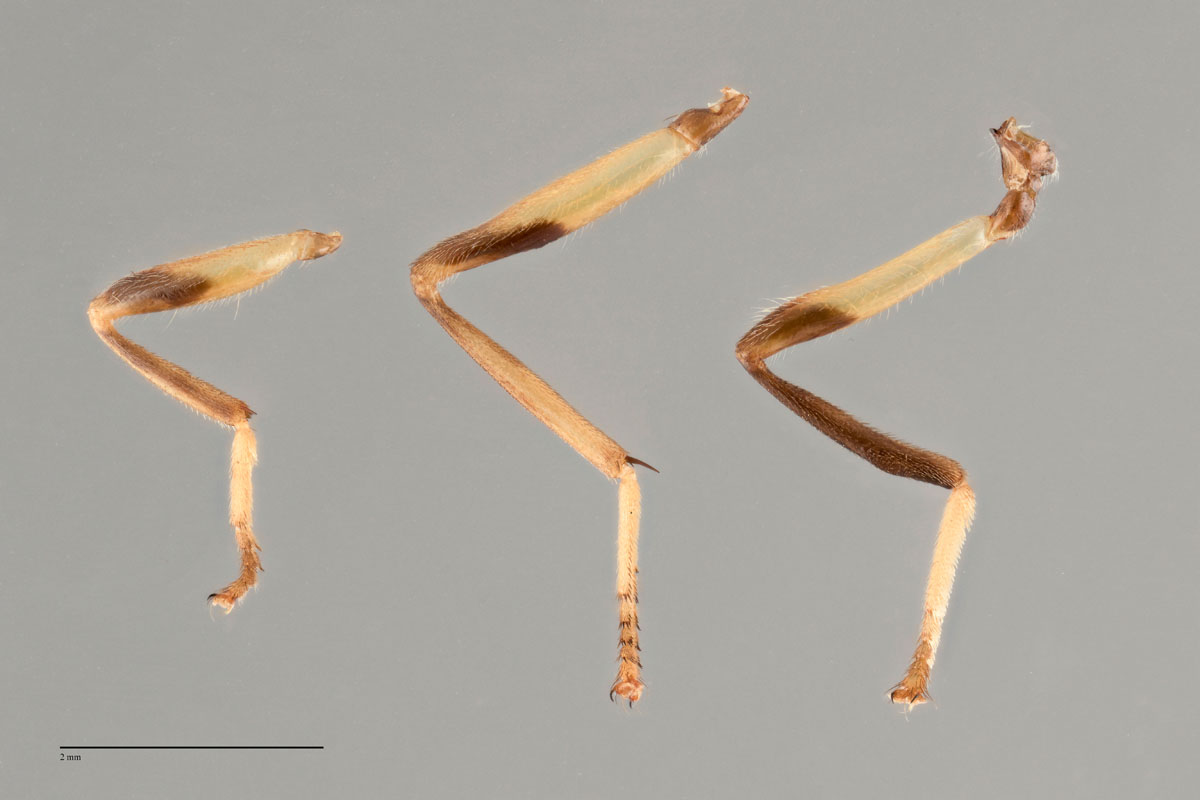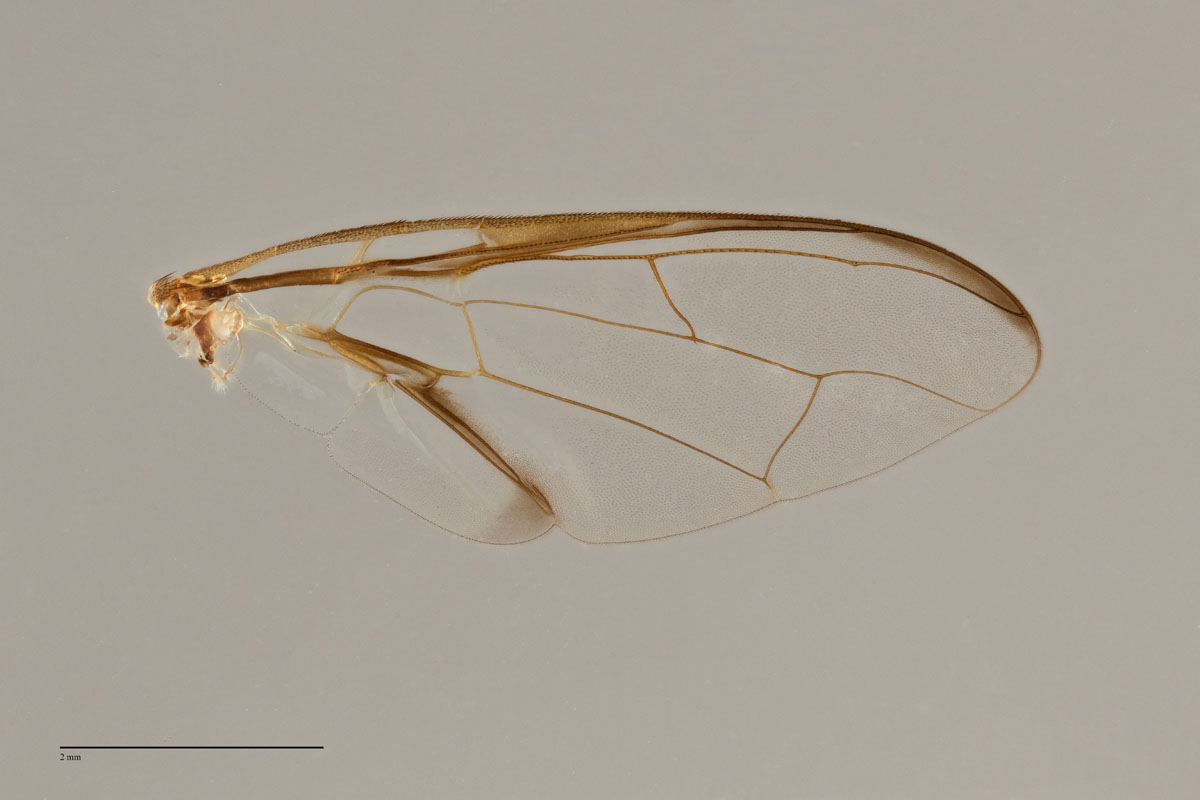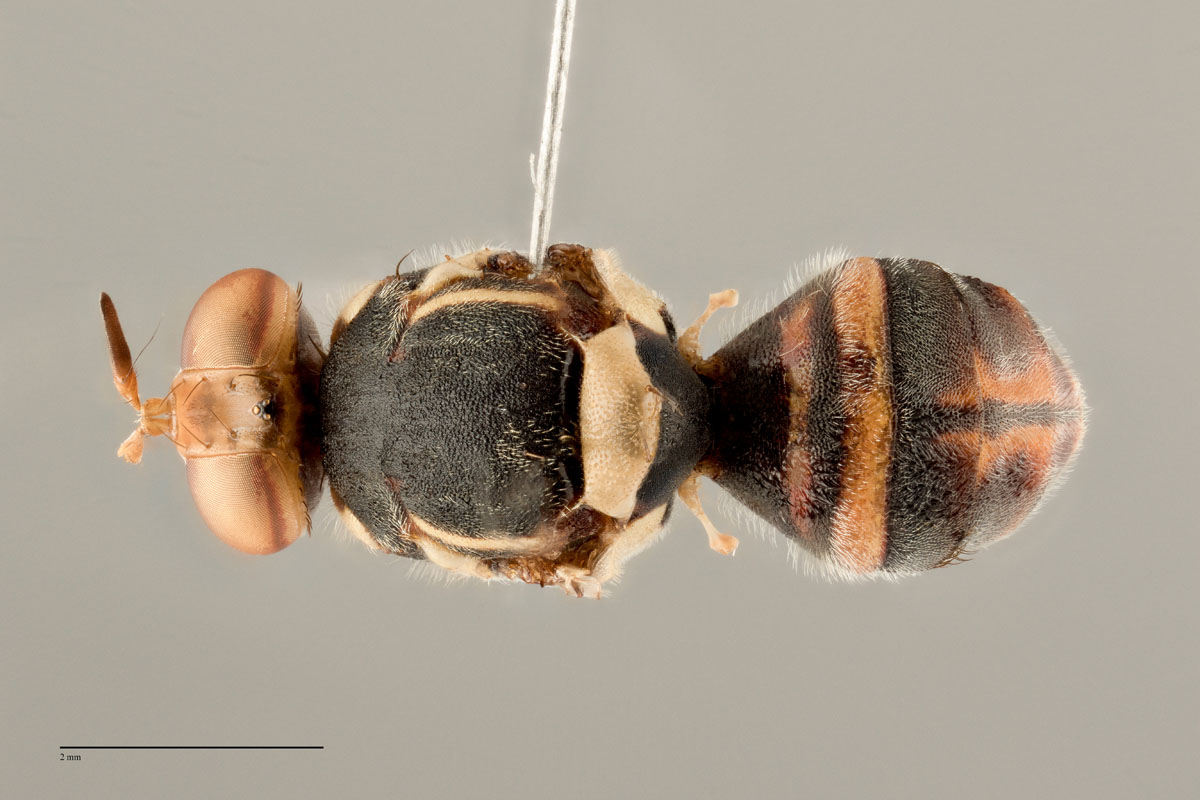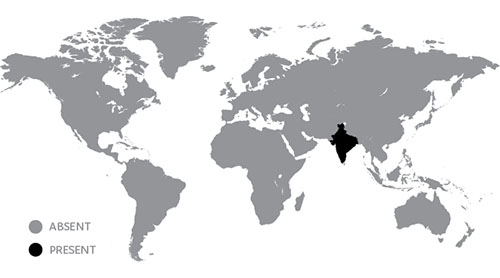Diagnosis
Morphological – adult
Features include:
- face fulvous with a pair of large elongate oval black spots
- scutum black with a small area of dark brown posterolateral to lateral postsutural vittae
- postpronotal lobes yellow (except anterodorsal corners fuscous)
- notopleura yellow
- mesopleural stripe reaching midway between anterior margin of notopleuron and anterior npl. seta dorsally
- two narrow lateral postsutural vittae which are either parallel sided or narrowing slightly posteriorly to end at or just before ia. seta
- medial postsutural vitta absent
- scutellum yellow with a broad black basal band
- legs with femora fulvous with large dark fuscous to black preapical spots on outer surfaces of fore femora and inner surfaces of mid and hind femora, fore tibiae fuscous, mid tibiae fulvous, hind tibiae dark fuscous
- wings with cells bc and c colourless, sparse microtrichia in outer corner of cell c only, a very narrow fuscous costal band confluent with R2+3 and remaining very narrow around apex of wing, a narrow fuscous anal streak contained within cell cup
- supernumerary lobe of medium development
- abdominal terga III-V orange-brown with dark fuscous to black across anterior 1/3 to 1/2 of tergum III, two broad lateral longitudinal dark fuscous to black bands and a narrow medial longitudinal black band over all three terga, a pair of oval orange-brown shining spots on tergum V
- abdominal sterna dark coloured
- posterial lobe of male surstylus short
- female with aculeus tip needle shaped (Drew and Romig 2013).
Morphological – larvae
Information not available.
Molecular
DNA barcoding
BOLD reference data available.
Diagnostic to the level of the B. dorsalis species complex, but difficult to resolve amongst several other species within the complex.
PCR-RFLP Test 1
BsrI: Data not available
HinfI: Data not available
HhaI: Data not available
Sau3AI: Data not available
SnaBI: Data not available
SspI: Data not available
Vspl: Data not available
PCR-RFLP Test 2
Data not available.
